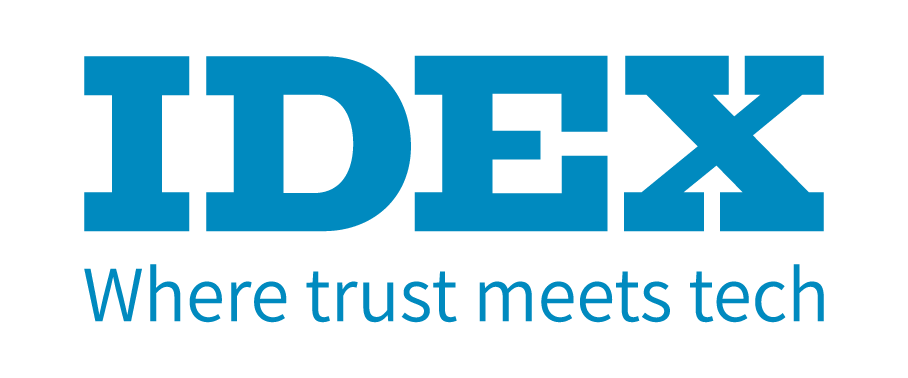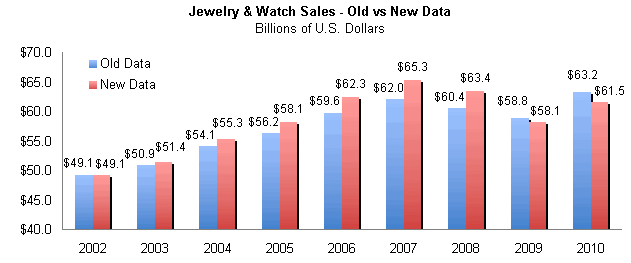IDEX Online Research: U.S. Jewelry Industry Now A $65 Billion Enterprise
August 21, 11
(IDEX Online News) – New government data has boosted the size of the
The full analysis is available to IDEX Online Research subscribers and IDEX Online members here.
In the heady pre-recession years earlier in the past decade, the U.S. Department of Commerce made only minor revisions to its annual jewelry industry sales estimates. For most of the past decade, the government said that the total American jewelry market was a $65 billion industry, based on annual sales levels.
In 2009, the Commerce Department made a major database revision – amending sales data back to 1993 – which showed that the
With its latest industry sales database revision in early August, the Commerce Department has restored the
The revised jewelry sales data from the Commerce Department sheds new light on jewelry demand during the Great Recession of 2008-2009, as well as the recovery period of 2010 and early 2011, including the following:
· At its peak in 2007,
· Jewelry sales in 2010 were revised downward by nearly $2 billion to just over $61 billion, indicating that the jewelry industry has not yet recovered to pre-recession sales levels. Earlier data – now restated by the government – showed that 2010 was a record sales year; this is no longer correct.
·
· Watch sales represent just over 13 percent of total jewelry and watch industry sales. Prior data pegged the watch sales mix at about 11 percent of total industry sales.
· Specialty jewelers generate just over 43 percent of the industry’s total
· There is a near perfect correlation between recessionary environments and specialty jewelers’ loss of market share: when the economy slows, specialty jewelers lose market share, which they never seem to regain.
· The
· Jewelry’s share of wallet is relatively unchanged, despite the major revision in jewelry sales. Why? Personal consumption expenditures were also revised upward, so the ratio of jewelry sales to personal consumption expenditures remains about the same. However, it is important to note that jewelry share of wallet has declined modestly over the past decade.
The following graph illustrates the differences between “old” data (blue columns) and the “new” revised data (red columns) for
 Source: US Dept of Commerce |
The full June sales analysis and statistics is available to IDEX Online Research subscribers and IDEX Online members here. Click here for more information on how to subscribe or become a member.